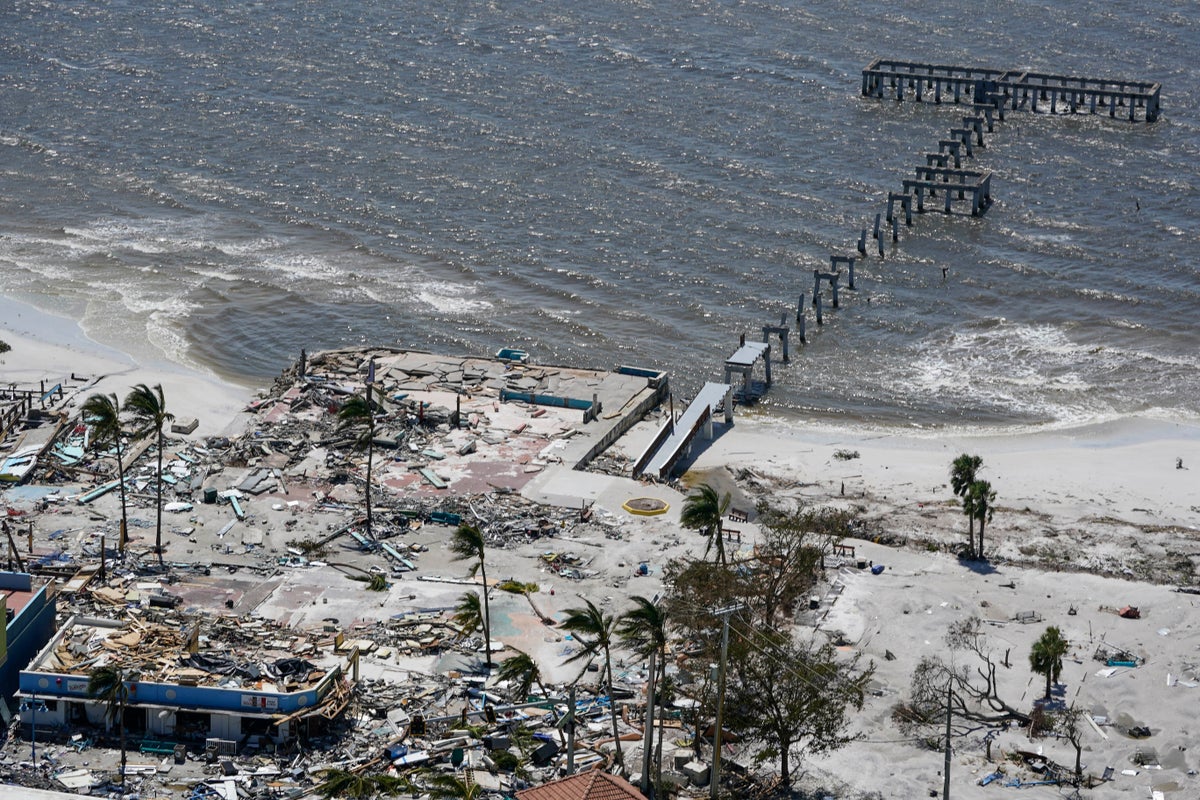
Hurricane Ian has brought widespread devastation to Florida, with many areas facing months or years of rebuilding, and for many residents, the recovery process might be prolonged without proper flood insurance, property insurance or other reimbursements for damages.
In Florida, ongoing challenges and setbacks for the state’s insurance industry could exacerbate these problems even further.
“Florida’s property insurance market was the most volatile in the U.S. before Hurricane Ian formed and will most likely become even more unstable in the wake of the storm,” Mark Friedlander from the Insurance Information Institute, an insurance trade association, told the Associated Press.
Florida Chief Financial Officer Jimmy Patronis even issued a warning to those impacted by Ian on Thursday. During a press briefing with Florida Gov Ron DeSantis, Mr Patronis called insurance companies “predators” who will “initially try to sign up construction management contracts, public adjusters.” He also noted that “if it sounds too good to be true, it is.”
“They’re going to come in like a bunch of locusts, and they’re going to try to hit the neighborhoods, and people are vulnerable right now,” Mr Patronis said, before adding: “That first phone call that you’re going to make needs be to your agent, your carrier, or to my office.”
Florida’s insurance landscape has been rocked by financial and solvency challenges in recent years. Since the start of 2020, a dozen insurance companies in the state have gone out of business and dozens more are in a precarious financial position, NBC News reports.
As the industry lost money and companies went bankrupt, hundreds of thousands of Florida residents lost coverage and didn’t renew — leaving them uninsured from damage, AP says.
For those that remain insured, premiums have shot up to more than $4,200 per year on average, more than three times the national average, they add.
Those without coverage could be left to rebuild after damage from Hurricane Ian without much financial help.
FEMA, the Federal Emergency Management Agency, does not typically reimburse costs for major damage, staying more limited to minor repairs and costs for temporary housing, reports The New York Times.
Many Floridians left out of the private market have opted into a state-run insurance policy called Citizen’s Property Insurance, AP reports. Despite some concerns about the number of claims they’ll get after Hurricane Ian, Governor Ron DeSantis said on Wednesday that he expects the program to remain solvent, AP adds.
These problems may also be compounded by a lack of flood insurance policies. Home insurance claims could be submitted for lots of different kinds of damage from Hurricane Ian — but flood damage isn’t covered by most property insurance.
Instead, flood insurance is run as a separate program through the federal government. Many at-risk people are covered — anyone in a high flood-risk area with a mortgage from a government-backed lender is required to have a policy, according to FEMA.
But many other high-risk home and property owners have foregone flood coverage. The New York Times reports that in Florida counties where some people were told to evacuate, only 47.3 per cent of homes in the designated floodplain have flood coverage, citing data from the actuarial firm Milliman.
Outside the floodplain, where people may still have seen flood damage from severe storms like Hurricane Ian, that number drops to less than 10 per cent of homes, the paper adds.
Flood insurance challenges aren’t limited to Florida, however. The Times reports that in Texas, just 32.1 per cent of homes in the floodplain had insurance. In Alabama and Georgia, that number is closer to 20 per cent, the paper says.
As the climate crisis grows, climate hazards like flooding and tropical cyclones are only likely to get more common. Hurricanes are expected to get stronger on average as the oceans warm and send more wind and rain into the storms — leading to more potential danger when they make landfall.
In the past five years, hurricanes like Harvey, Laura, Florence and Michael have devastated communities in the southeast, killing dozens and destroying homes with powerful winds and heavy rainfall.
Climate challenges from flooding aren’t limited to the coasts. Just this year, heavy flooding has rocked eastern Kentucky, northern Arizona and the area around Yellowstone National Park in Montana and Wyoming as severe storms passed through.
The risk of inland rainstorms and flooding like these events is also expected to grow in the coming decades as the planet heats up.







